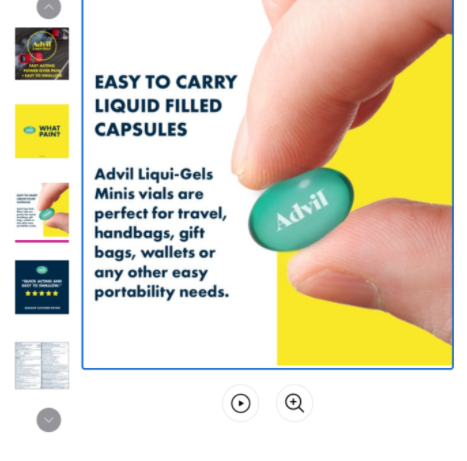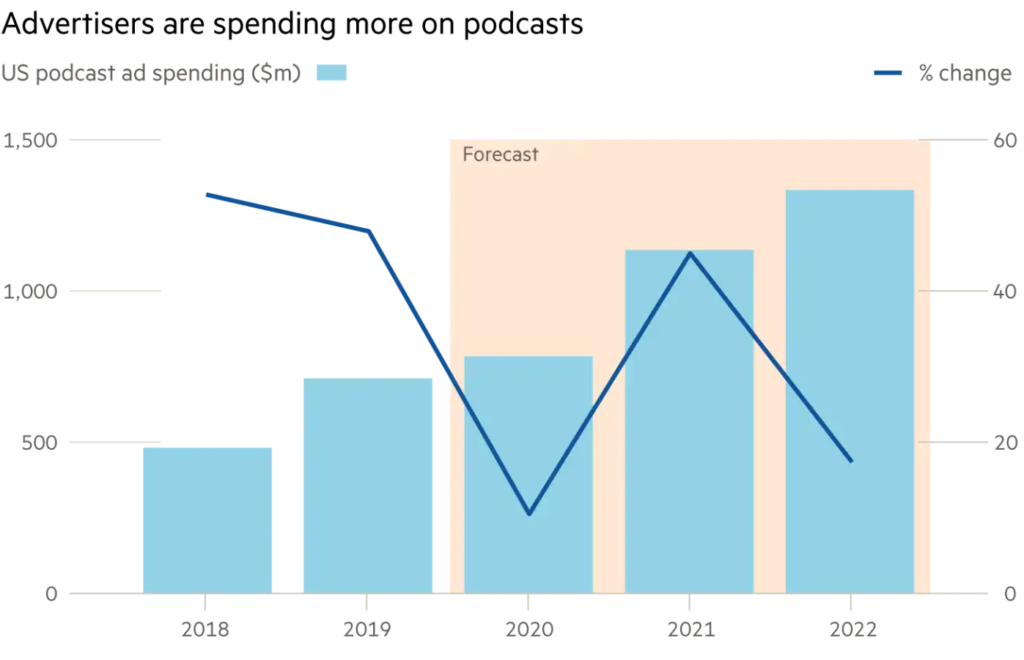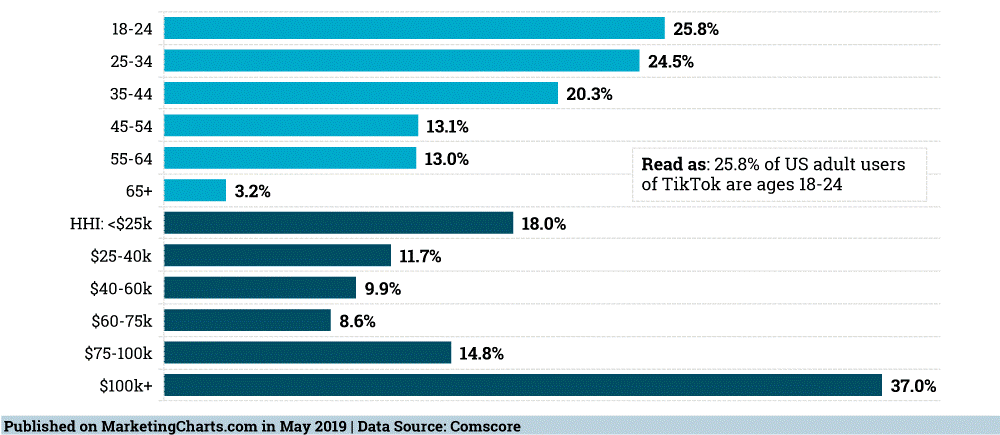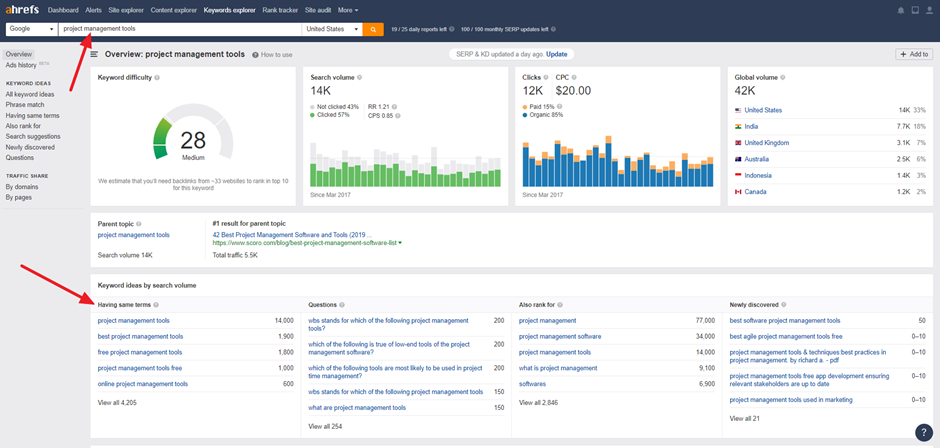While there are millions of pages on the web, none are more important to digital marketers than search engine results pages (SERPs). This is because digital marketers use to know how search works and what they can do to maximize their visibility.
What are SERP features?
SERP features are any result of a search query on a Google Search Engine Results Page (SERP) that is not a traditional organic result.
Every SERP is unique, even for search queries performed on the same search engine using the same keywords or search queries. This is because virtually all search engines customize the experience for their users by presenting results based on a wide range of factors beyond their search terms, such as the user’s physical location, browsing history, and social settings.
The most common SERP Features are:
- Rich Snippets which add a visual layer to an existing result (e.g., review stars for product ratings)
- Paid Results that are bought by bidding on keywords (e.g., AdWords or Google Shopping)
- Universal Results that appear in addition to organic results (e.g., image results, new results, featured snippets)
- Knowledge Graph data which appears as panels or boxes (e.g., weather, Celebrity Knowledge Panel)
Types of SERP features & How to Rank for Them
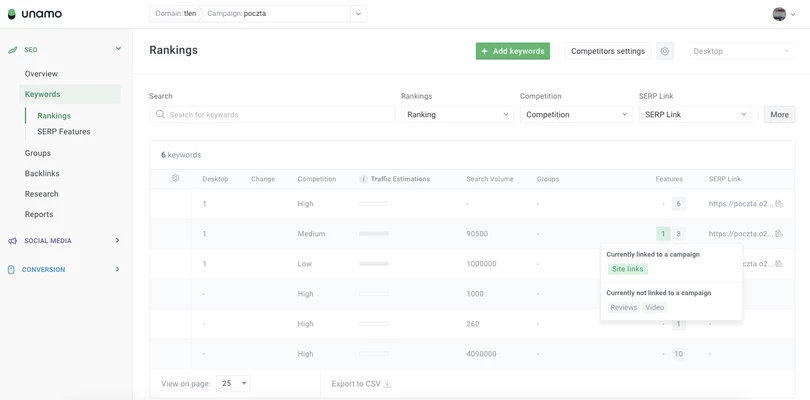
Some common types of SERP features that appear in Google SERPs are:
Google Ads (Top & Bottom)


You can influence Google to rank your ads at the top by bidding more, improving UX of the ad and targeting keywords that match the intent of your ad.
However, there are cases when Google may determine that organic search results actually serve the user more value than paid ads, despite your bidding on a keyword within a Google Ads auction.
Hence, while having your ads at the bottom of SERPS are not ideal, ranking above other bottom-SERP ads is still preferable.
Featured Snippet

To rank for a Featured Snippet you should be already ranking within the top 5 positions (sometimes it can be positioned 6-10, although it’s very rare).
Using structured data like Schema Organization Markup can help search engines like Google understand your content a bit better. Hire a technical SEO agency to optimize your website if your unsure of how to do this.
While Schema markup is not required to rank for a featured snippet; however, as many other types of SERP features do require structured data to rank for them, it becomes a useful tool.
Image Pack

To have your images show up for this SERP feature, you should have a descriptive file name such as “old town warsaw.png”, user-friendly URLs, proper ALT tag attributes in place, high-quality images, and image title tags.
In-Depth Article

To appear as an in-depth article, you need a schema article markup and to correctly optimize the following elements: Headlines, Alternative headlines, Image (must be crawlable), Description, Publishing date, and Article body.
Also, You need to use rel=canonical tags for paginated content and if some of your pages require sign-ups or online registrations, you may not be eligible to appear as an in-depth article as Google will not allow for content to be posted it cannot crawl.
Knowledge Card
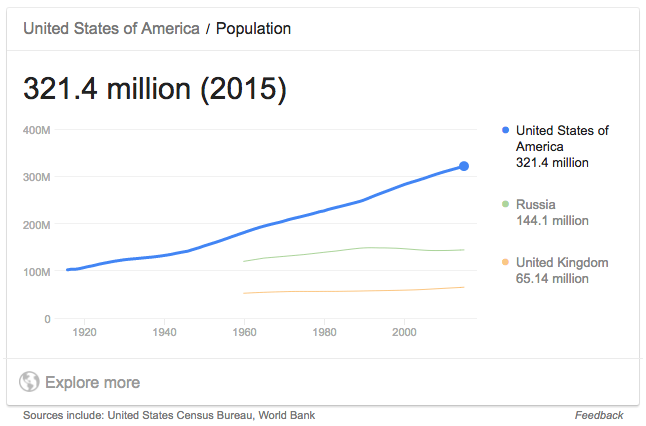
Even if you have your business listed in a Knowledge Panel, the chances of it appearing in a Knowledge Card are slim. The information would need to be extremely data-oriented, verified by top informational sites like Wikipedia, and have enough of a search volume for Google to deem it worthy of a Knowledge Card.
Therefore, updated Google My Business accounts, websites, and online directories are great ways to make information easily available to search engines and searchers.
Google may pull data from a brand’s About Us page, Wikipedia page, or various business listings, among others.
Knowledge Panel
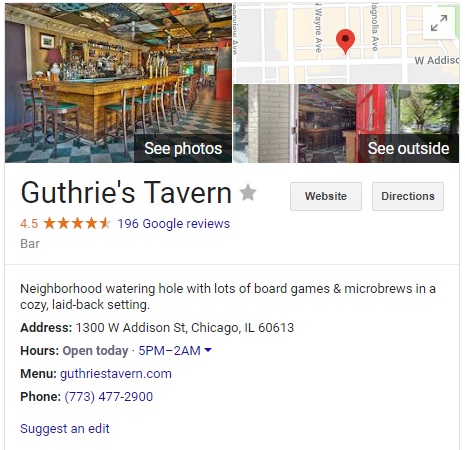
Google takes the information it displays in a Knowledge Panel from these sources: Wikipedia; Wikidata, and CIA World Factbook.
If you’re a celebrity, business, or topic of significant interest, then it’s possible to have a Knowledge Panel featuring information about the topic in question.
If you want your business featured then you’ll have to submit your business to Wikipedia with a link to your Wikidata, and then update your Google My Business and Google Maps. You’ll also need to use an Organizational Schema Markup and verify your Social Media pages.
Local Pack
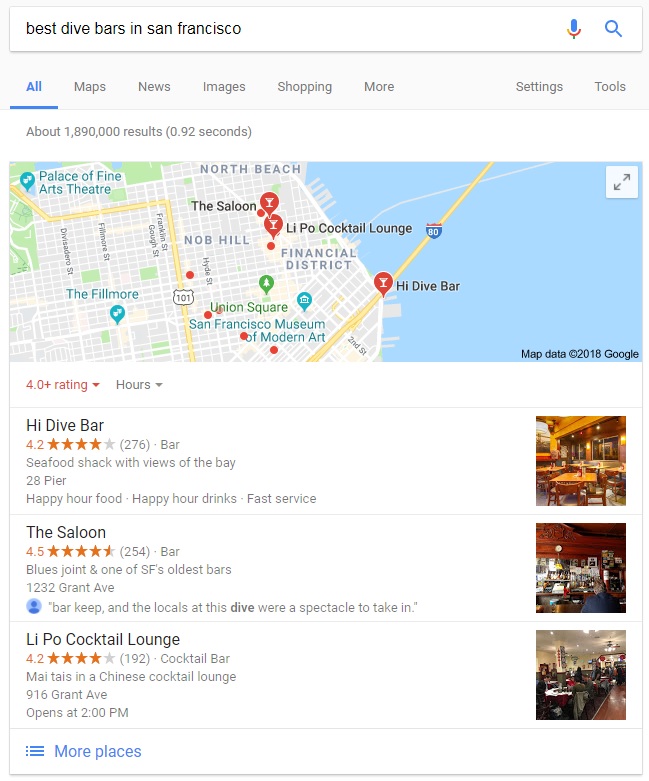
Optimize for Local SEO. Use barnacle SEO directories like Yelp, Yellow pages, etc. Fill out a Google + profile. Use Google My Business.
Have a website that is optimized for mobile. Responsive web design, adaptive design, or mobile URLs are great ways to build a mobile site.
Use a Schema Organization markup for your business location, name, and telephone number.
Local Teaser Pack
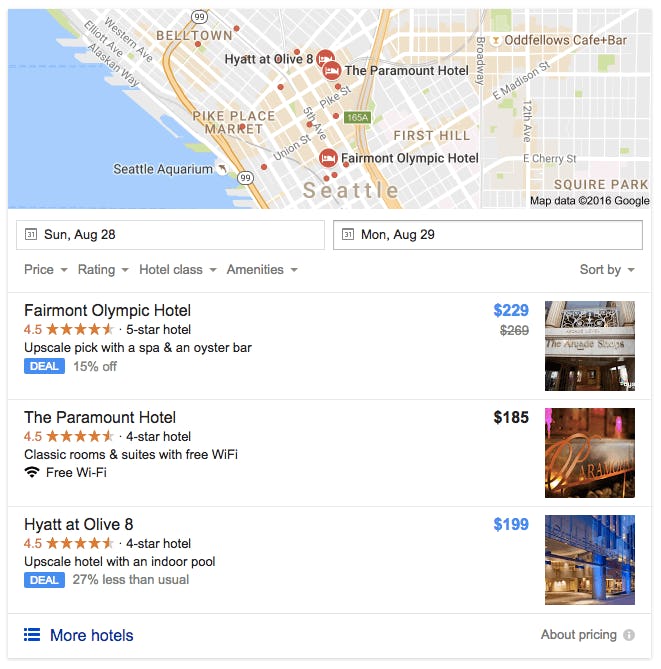
Follow the guidelines listed above for a Local Pack with special attention to filling out your organization schema markup completely.
News Box

From a general perspective, according to Google, for your content to be displayed as a News Box, it must have timely reports on current events, Originality, Accountability and transparency, Accurate information, and Readability.
From a technical point of view, it needs to have: Permanent article URLs, Links, HTML formatting, Robots.txt and/or meta tags, and No multimedia content. However, it does include Youtube videos.
Furthermore, you can request inclusion into Google News after you have checked that your website and content meet the abovementioned criteria. If you’re adding mobile AMP content, you should also apply the correct AMP article schema markup to increase the likelihood that it shows up as a News Box SERP feature.
Related Questions (People Also Ask)
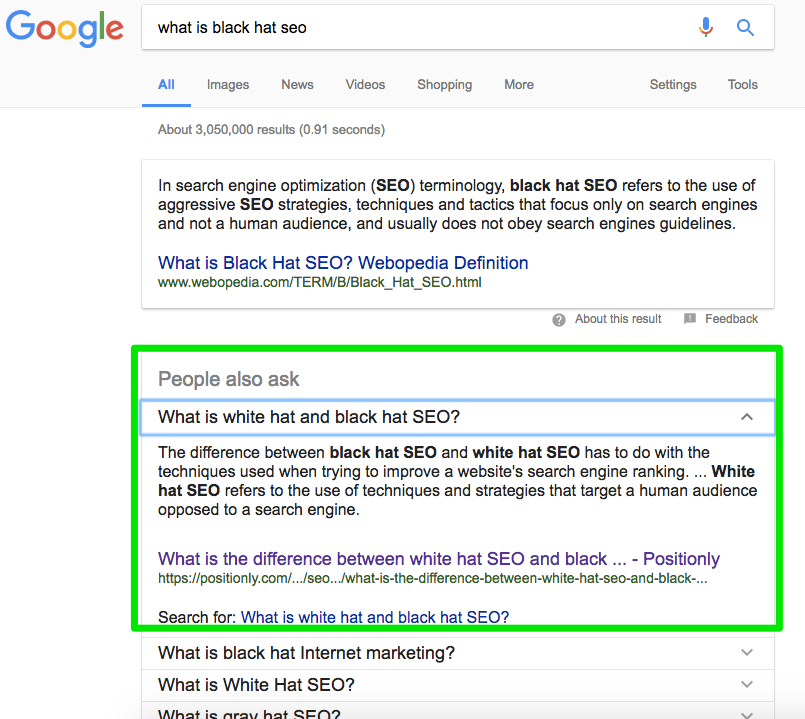
Trying to rank for People Also Ask in much the same way you would for Featured Snippets; with good SEO. Already ranking in the top 10 results will make it easier if your webpages are answering specific questions or defining certain things. FAQs and knowledge bases are great tools for these.
Reviews

With barnacle SEO sites like Yelp, they’ll provide you with API instructions on how to get your site listed with reviews that will then show up in the SERPs.
If you’re a local business and want reviews to show up with regard to a Knowledge Card about your business, you can follow these instructions and apply the relevant schema review markup.
Shopping Results

To be displayed in Google shopping results, you’ll have to register with Google’s Merchant Center. After you complete the process and set up your account you can add your products.
Site Links
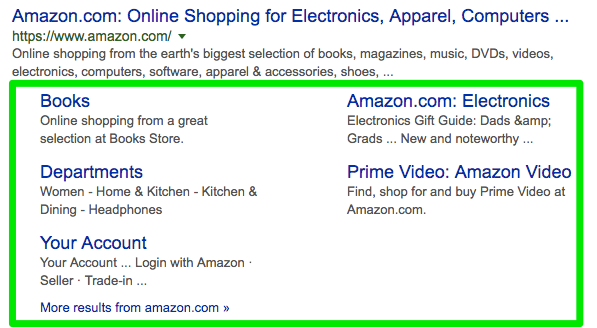
To get sitelinks for your website, you’ll need to make sure you have the following: A good navigational structure and hierarchy for your website. Internal linking is paramount here; A sitemap that you’ve submitted to Search Console; A website schema markup.
Also, your site must also receive a decent amount of traffic under your brand name. Also, make sure your meta descriptions for each page are showing up properly and that they describe what each page will contain.
Tweets
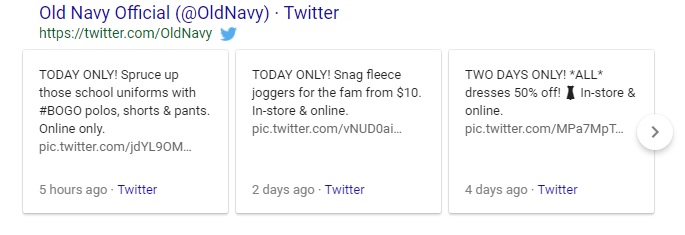
Twitter packs are perhaps one of the more mysterious SERP features that Google has implemented. A regularly updated Twitter feed allows Google to cycle through trending tweets from your brand and feature them in search results.
You do not need to have a verified blue checkmark on Twitter or even have a huge social following – all you have to do to be featured in SERPs is post often and encourage engagement. Tweets that have a lot of comments and retweets send strong signals to Google that your Twitter profile is relevant.
Videos

Video results typically follow the normative SEO ranking guidelines set forth by Google Webmaster support. You’ll need to follow the video schema markup and provide details for the video’s description, thumbnail image, duration, and the date it was uploaded.
How to Monitor SERP Rankings and Traffic
You can monitor any SERP features you may be ranking for with Unamo SEO. A module in the keyword section will show you what SERP features are present on a SERP with your ranking keyword. It will also tell if your keyword is ranking as one of the SERP features.
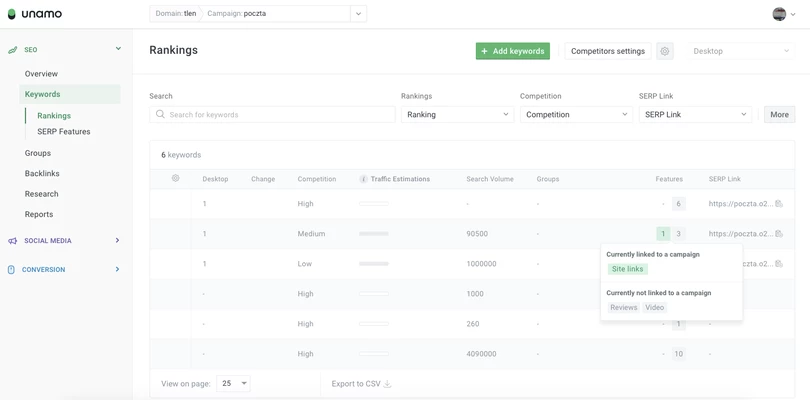
Furthermore, you can see a timeline of when your keywords were ranking as SERP features to pinpoint any increases or loss in traffic.
Ranking for certain SERP features can provide a huge boost in traffic and click-through-rates. They allow users to quickly grasp relevant information about your website and provide structured ways of data dispersal to solve user problems on the SERP.

